Potsdam
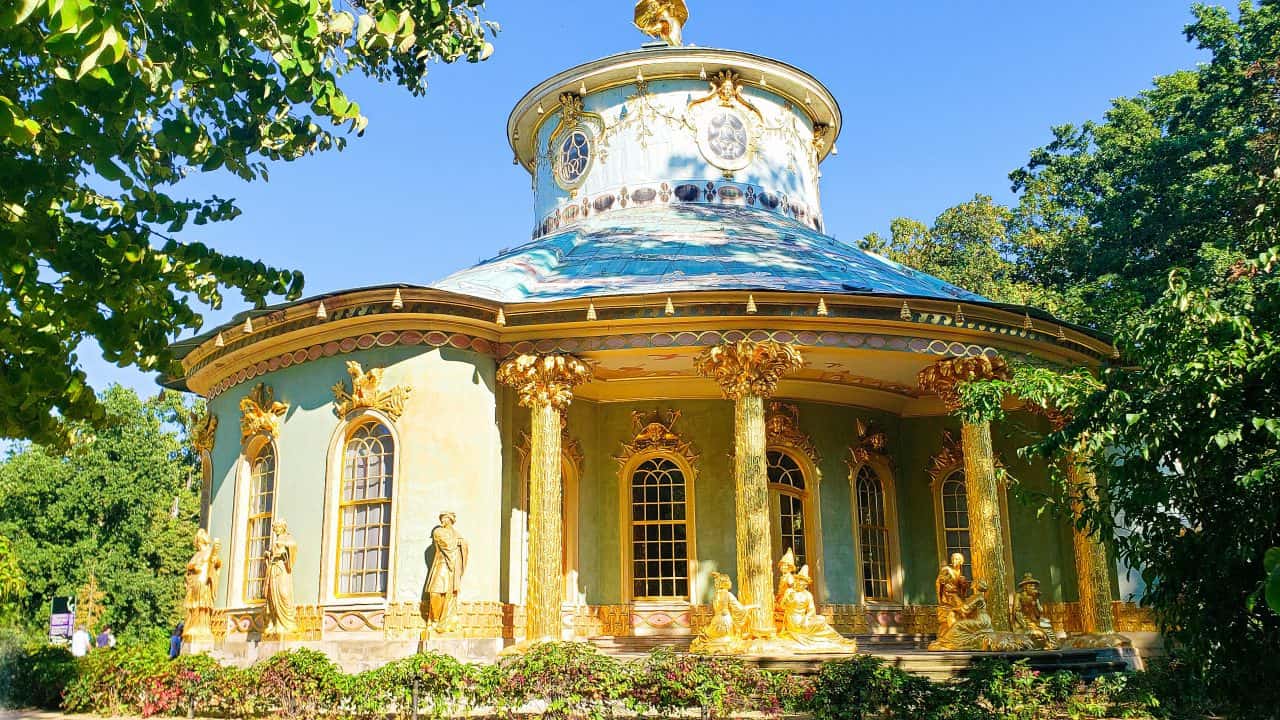
Mike and I visited the city of Potsdam before returning to Canada in August. Our plan, after arriving back in Germany, was to overcome our jet lag as soon as possible and go to Berlin for a second visit. Instead, we remembered how much we had liked Potsdam and ended up returning there twice more and never did get back to Berlin.
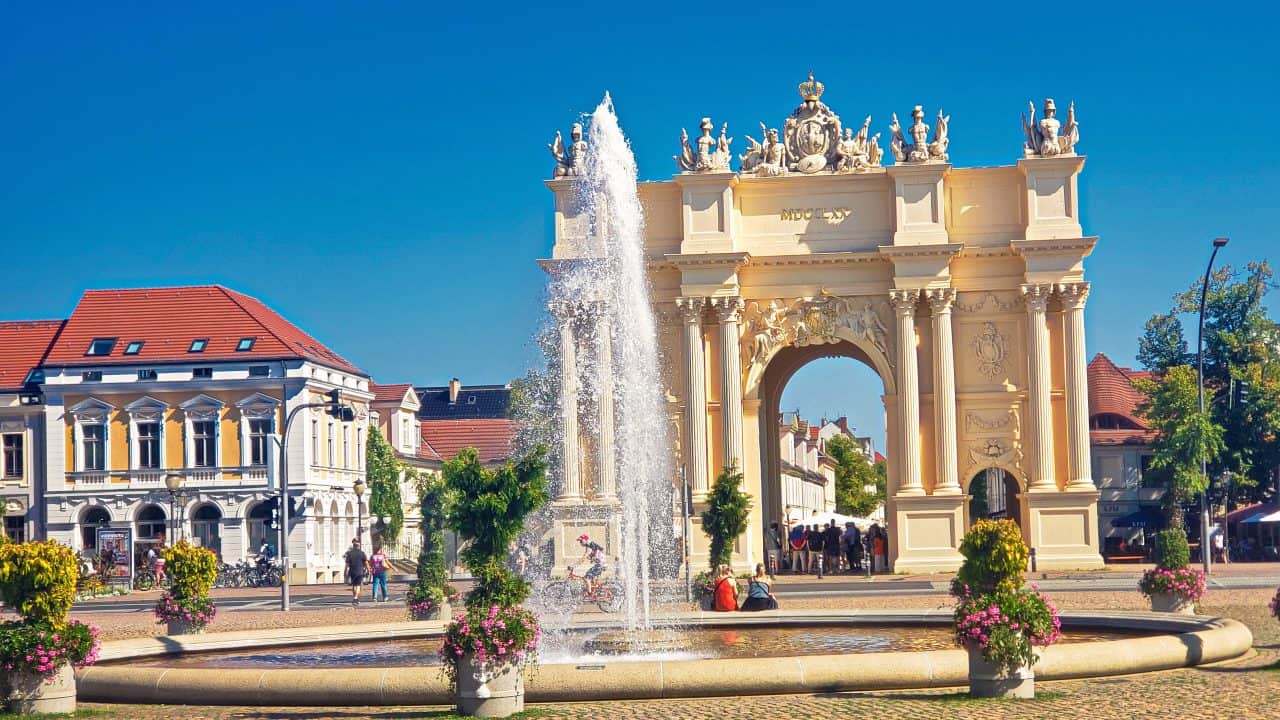
The city of Potsdam is the capitol of the Brandenburg region. Three of the city gates managed to survive WW II. Your first introduction to Potsdam might well be through the Brandenburg Gate built in 1770. Didn’t I tell you last week that the term Brandenburg is everywhere. This is NOT the more famous Brandenburg Gate in Berlin, but it is lovely. The two sides of the gate are quite different with one side designed by the master and one side by the student. Guess which Mike and I both preferred. Yes, we both liked the student’s design better than the master’s. You can see the student side in the picture here. The second time we visited Potsdam, the square around the fountain was filled with tents and kiosks, all with various wines. Whether it was a wine tasting or some sort of wine festival we don’t know.
Entering through the Brandenburg Gate you wander down a lovely little street until you come to the Old Market Square. This square was once considered to be one of the most beautiful squares in Europe but most of the buildings were destroyed in the bombings of WW II. The buildings on the square today are replacements, many rebuilt in just the last few decades.
The main building to the left in the picture below is the St. Nicholas Church which is today a concert hall. After the war the communists wanted to replace the symbols of Prussian Monarchy with symbols that reflected their own values. One way they did this was to replace statues of kings with statues of architects. They followed this approach when they rebuilt the obelisk, also in the picture. After the collapse of the communist East German regime in 1989, some of the statues of kings were restored to their original locations. However, some of the statues of architects remain in place, serving as a reminder of the city’s communist past.
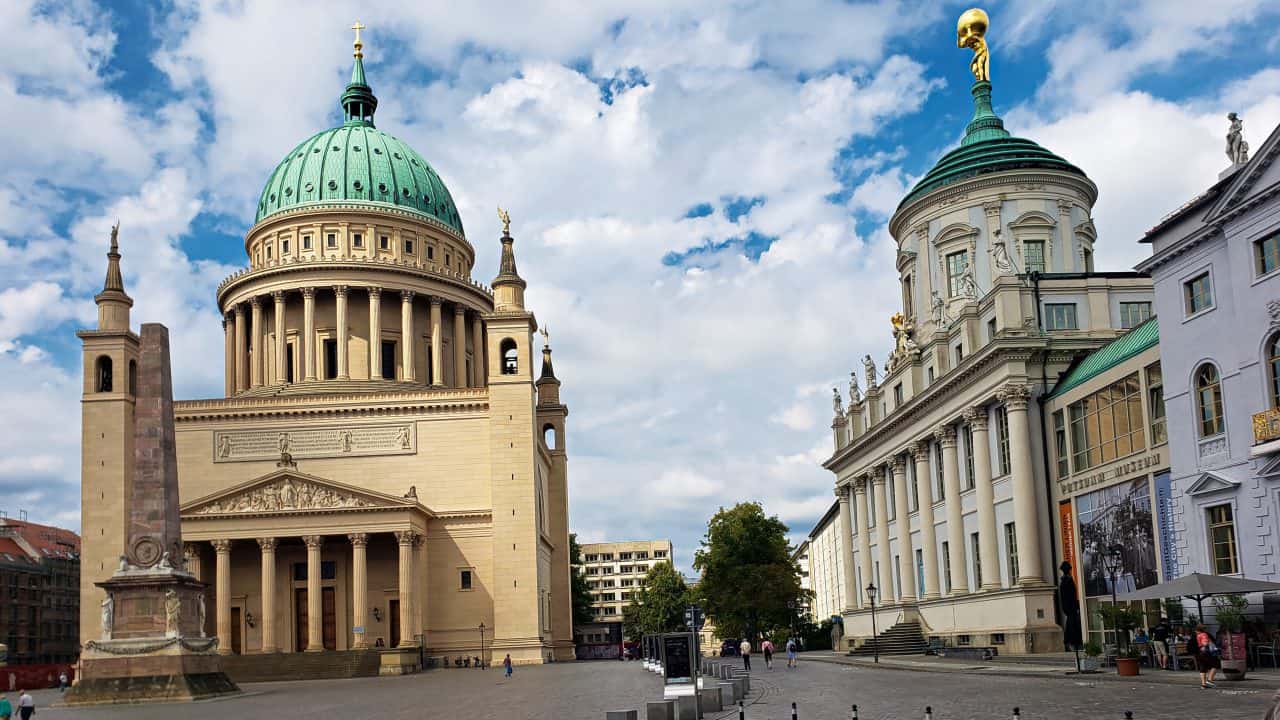
Like Berlin, Potsdam was a very swampy area and the land had to be drained somehow. To solve this problem in the 1700s the king called upon the Dutch because, obviously, they knew how to drain the land. To attract the Dutch, the king built them a small town which was meant to remind them of home. Work began in 1732 on 134 Dutch Houses in this quarter. The problem was that Dutch workers had no reason to leave their country and go to far away Prussia in the East. They didn’t come. Except for just a few, no Dutch people ever lived here. In the end, Prussian and also French people, among them artists and soldiers, started moving in. During East German times, the houses were completely run down. Renovation started after reunification in the 90s, and today the Dutch Quarter is lovely to visit.
For another bit of trivia: In 1789 the very successful and famous but also chronically impoverished Wolfgang Amadeus Mozart stopped in Potsdam in the hopes of finding a sponsor in the Prussian King. Unfortunately, Frederic II, a great music lover, had just died, and the new king, Frederic William II, had no interest in Mozart. Mozart had to leave without receiving any money, or support, or even praise.
In 1713 when Frederic William I became king, Prussia had 1.6 million inhabitants and 40,000 soldiers. 27 years later when he died, there were 80,000 soldiers. Potsdam was growing and needed a wall. The wall wasn’t so much to protect the city from invaders but to make sure the soldiers that the King had bought, bribed or forced to join his army, would not desert their posts, that tradespeople and immigrants could be controlled, and that taxes could be collected. A 6 km long wall with 13 gates was constructed.
One fact that interested me was that there were no barracks for the soldiers at that time. Soldiers were put up with families. The King decided to build houses for families which he sold to them at a very good price, but with the condition that they would take in soldiers. Does this sound like something that Canada could consider, given our problem with lack of accommodations for students?
Mike and I heard that people who grew up in the East are often offended when Westerners criticize their former home country. Not everything was bad, they say. It must have been hard for them to see Westerners take over, redo everything and tell them what’s right and what’s wrong even if, overall, conditions have improved dramatically.
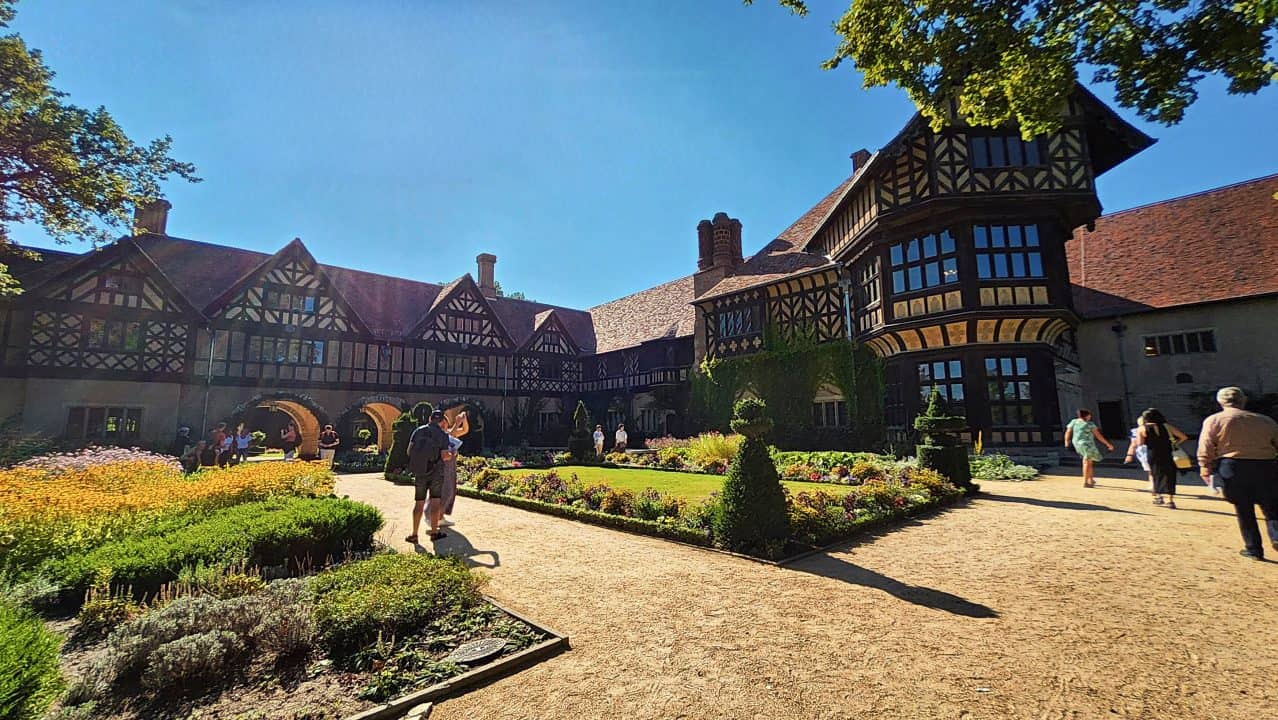
People who have an interest in fairly recent history will think of the Potsdam Conference as soon as they hear the word Potsdam. That is really what the city is known for in the west. Potsdam is where the Allied leaders met in 1945 to discuss the post-war order and the fate of Germany. In February of 1945, prior to the war ending, Soviet leader Joseph Stalin, British Prime Minister Winston Churchill, and U.S. President Franklin D. Roosevelt agreed to meet following the surrender of Germany to determine the postwar borders in Europe. Germany surrendered and the meeting took place in Potsdam from July 17 to August 2, 1945.
By this time, the dynamics among the Allied leaders had changed. Franklin D. Roosevelt had died and his vice-president Truman had only recently taken office. The United Kingdom had held a general election in early July but delayed counting the votes to allow for the overseas and military votes to be brought to Britain. On July 26, while at Potsdam, Churchill lost the election and Atlee became the UK Prime Minister. Two days later Prime Minister Atlee arrived in Potsdam to represent Britain and Churchill left. Stalin ended up being the senior statesman of the group. He had been in power for a long time and had dealt with multiple American and British leaders giving him an advantage in negotiations.
On July 25, 1945, the Potsdam Declaration was issued, which called for Japan’s unconditional surrender. On July 26 Truman received information about the first successful test of the atomic bomb. When Japan did not respond positively to the declaration, the decision was made to drop atomic bombs on two Japanese cities. Four days after the conference the first bomb was dropped on Hiroshima, three days later this was followed by the bombing of Nagasaki. Six days later, Japan surrendered, marking the end of World War II.
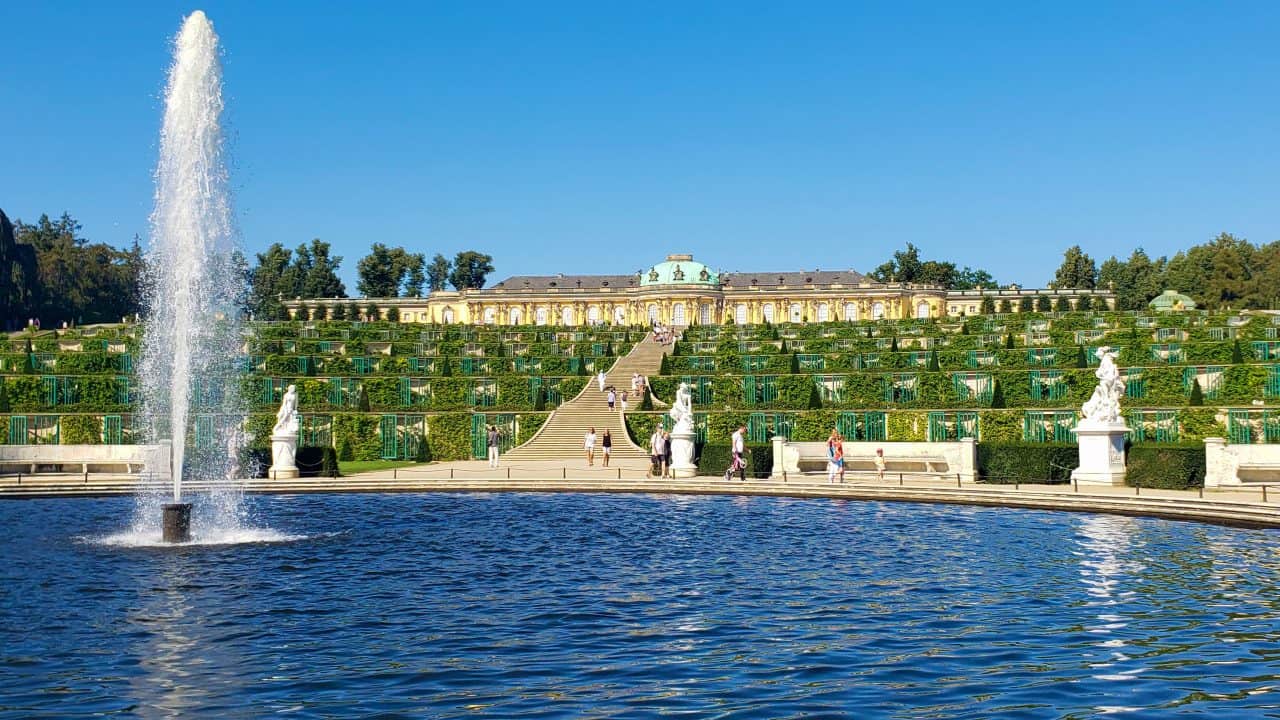
The final time Mike and I visited Potsdam, it was to see the number one attraction in the area, the Sanssouci Palace and grounds. The bad news is that the weather that day was 31° C (88° F) and sunny which was not conducive for long walks around the Palace grounds.
For a last little bit of history. Frederic William I, the “Soldier King”, was strict to the point of being very sadistic to his son Frederick. Frederic was extremely artistic which his father did not approve of at all. When he was a young man, Frederic tried to run away. He had told a friend of his who was a lieutenant in the army what he was planning. Frederic was caught and the father had the friend, the lieutenant, beheaded. Frederic was saved through the intervention of others, but he was made to watch the execution of his friend. He was incarcerated for a while and forced to marry a woman he despised. It was 10 more years before his father died and Frederic became King Frederic II, later to be known as Frederic the Great.
Once Frederic became king, he built himself a “little” sanctuary where he could be himself. The small palace Sanssouci had about 12 rooms, not counting the servant’s quarters. Frederic spent most of his summers at Sanssouci. He often entertained various friends, musicians and artists there.

The Sanssouci Colonnade (above) is a semicircular colonnade around the front of Sanssouci Palace. It is made of 88 Corinthian columns each of white Carrara marble. It is said to be a stunning example of Baroque architecture and an iconic landmark. This is the court of honor where visitors would have arrived in their horse-drawn carriages. Frederic wanted to impress them with a spectacular view. He hired some artists, including a theater set designer, and together they created a magnificent view. In the distance, you can see a hill with ancient-looking ruins on top. In actual fact the ruins are “fake news”. The ruins were built with the rest of the palace. They were designed to look like ruins because that made for such an impressive view.
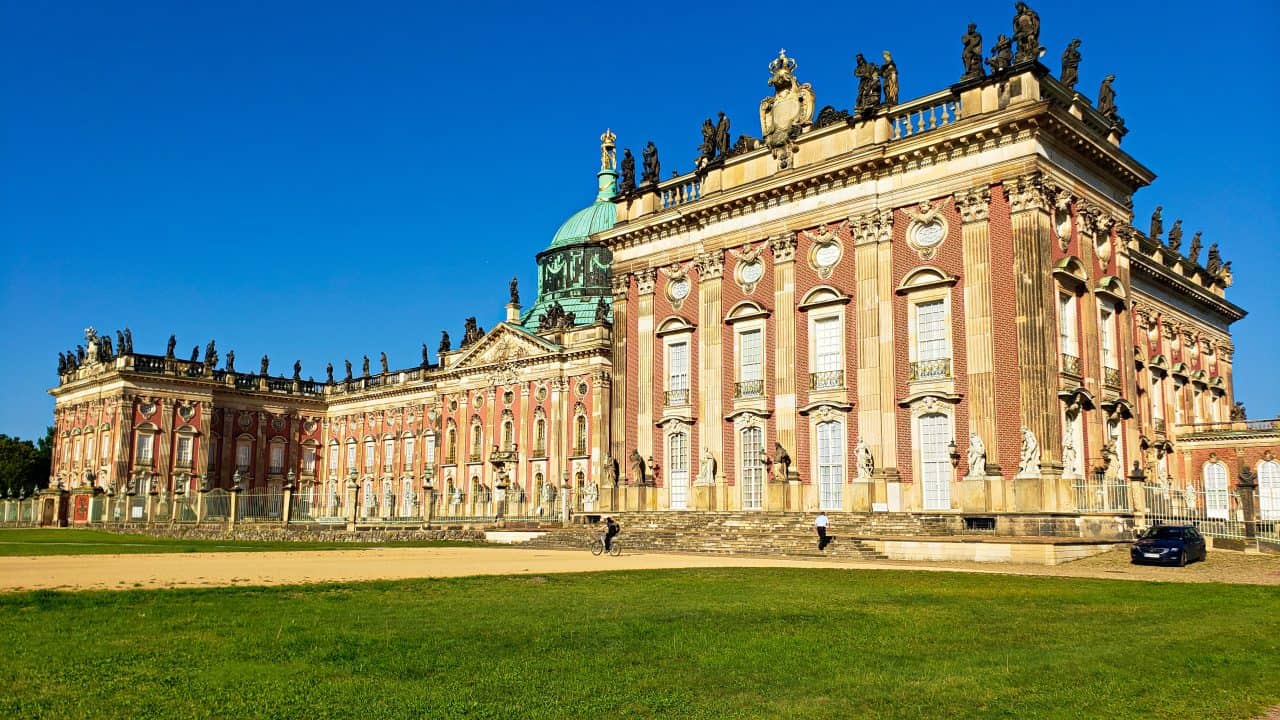
After Prussia won the costly Seven Year’s War (1756 – 1763) Frederic wanted to demonstrate the power and wealth of his kingdom. On the opposite end of the park from Sanssouci he built the massive New Palace. It had over 400 rooms and 4 Great Halls. I read that the palace was built in the Baroque style and decorated with lavish materials such as marble and gold. I am very sorry that Mike and I didn’t get to tour inside the New Palace. It was just way too hot and too long a walk from Sanssouci. Bicycles were not allowed in the park itself or we might have been able to make it. We did get to walk around the outside on a bus tour that we took in Potsdam. The New Palace was used by Frederick the Great for state occasions and for entertaining guests. His primary summer residence was still the more modest Sanssouci.
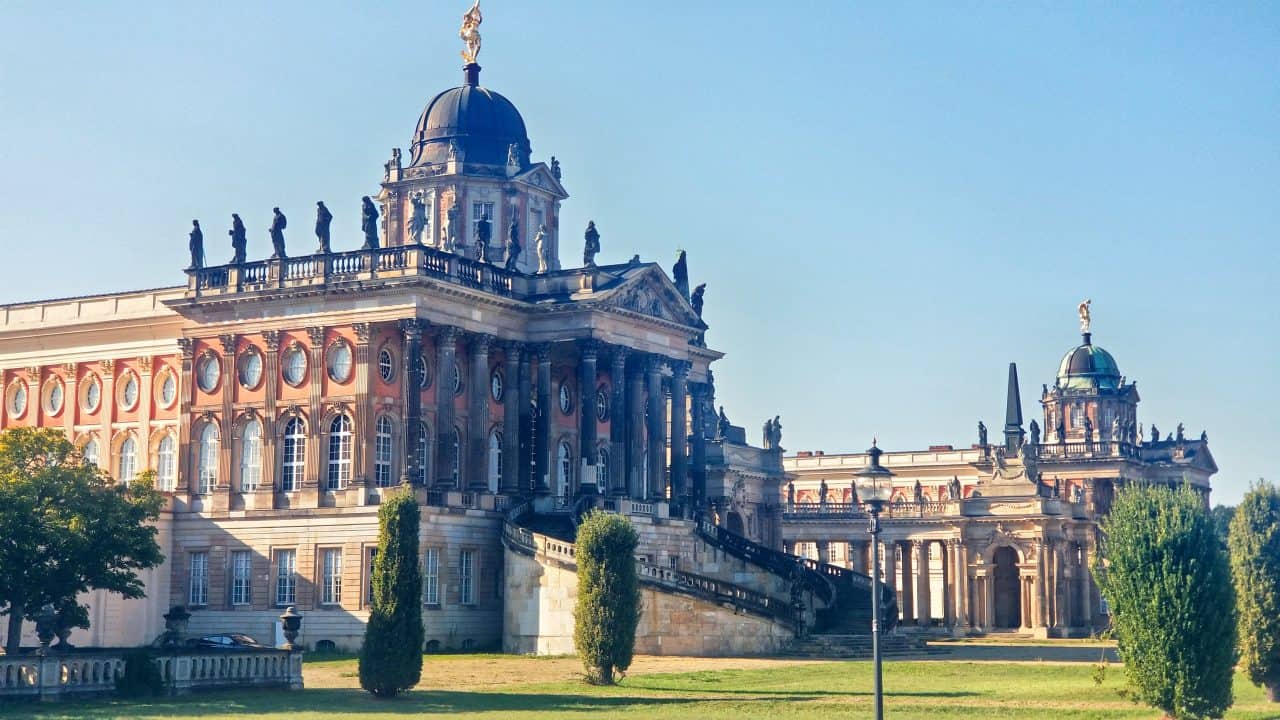
In front of the New Palace two plain, single-storey buildings were originally constructed. They were the servant’s quarters, the laundry and the New Palace’s kitchens. I guess there wasn’t enough extra space with 400+ rooms to build kitchens. Frederic decided that they didn’t make a very attractive view for his guests so he had new facades built and the buildings appearance greatly changed. The servant’s and laundry buildings became two of the largest and most impressive buildings in the complex. The upper floors didn’t really exist, they kept the old kitchens, servants quarters, etc.. which were already on the lower floor and just erected walls above them. Unbelievable what you can do with money. The university now owns these two buildings and have installed floors so that each level can actually be used.
In addition to Sanssouci and the New Palace, the park had many other attractions. At the top of this post you can see a picture of the Chinese Tea House. Around the tea house were Chinese statues that had reasonable Chinese attire but not many had proper Asian features. Most Europeans had never seen a Chinese person. Scattered around the park were multiple “Egyptian” obelisks that supposedly had hieroglyphics written on them except the hieroglyphics were more “fake news”. There was another palace on the grounds that Mike and I never saw. If we had stayed in the area, I would have liked to have gone back yet again to continue exploring just the park and the grounds.
Frederic had written in his will that he wanted to be buried at Sanssouci in a simple grave next to his greyhounds with no state funeral. That isn’t what happened. Since he only saw his hated wife once a year (she wasn’t allowed to visit Sanssouci) it isn’t surprising that he didn’t have children. His nephew, who disliked Frederic intensely, ignored the will, had a state funeral and had him buried next to his hated father. It took two hundred years for Frederic II to be bought back to Sanssouci and buried next to his beloved greyhounds.
I promise that our next article about the small towns near the Baltic Sea will be much less history and more touristy than Berlin and Potsdam turned out to be. See you then.
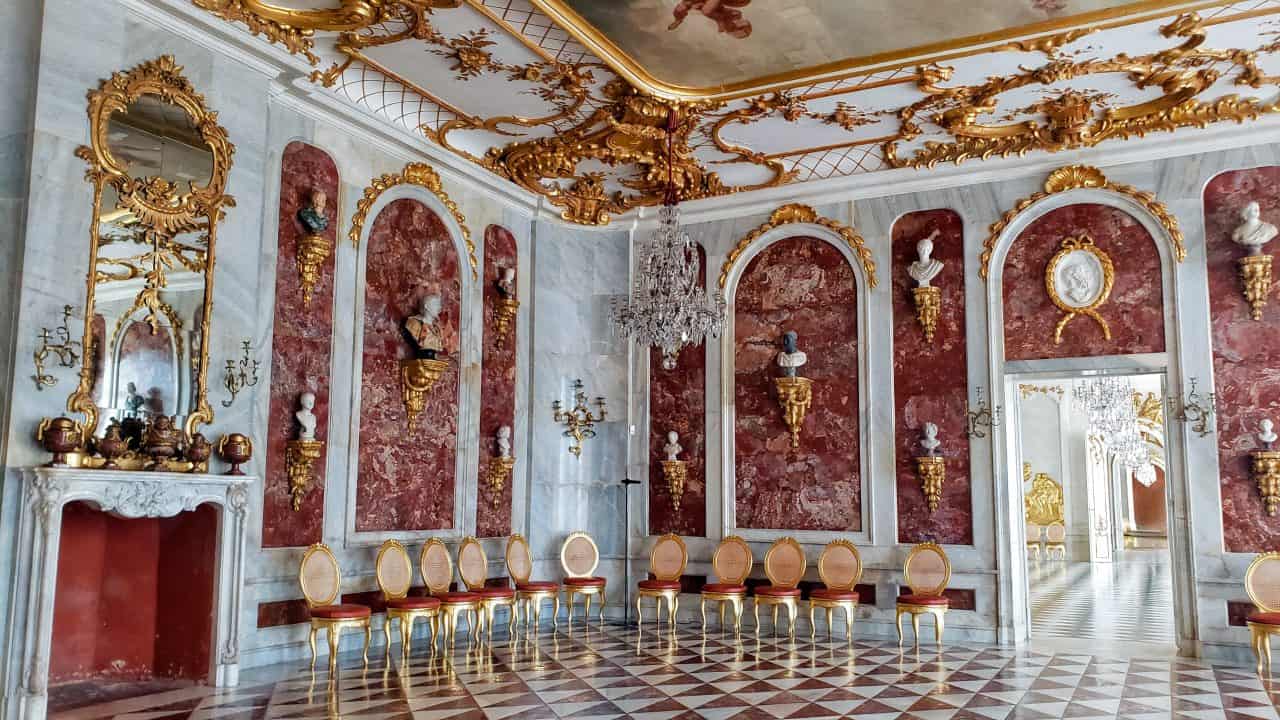
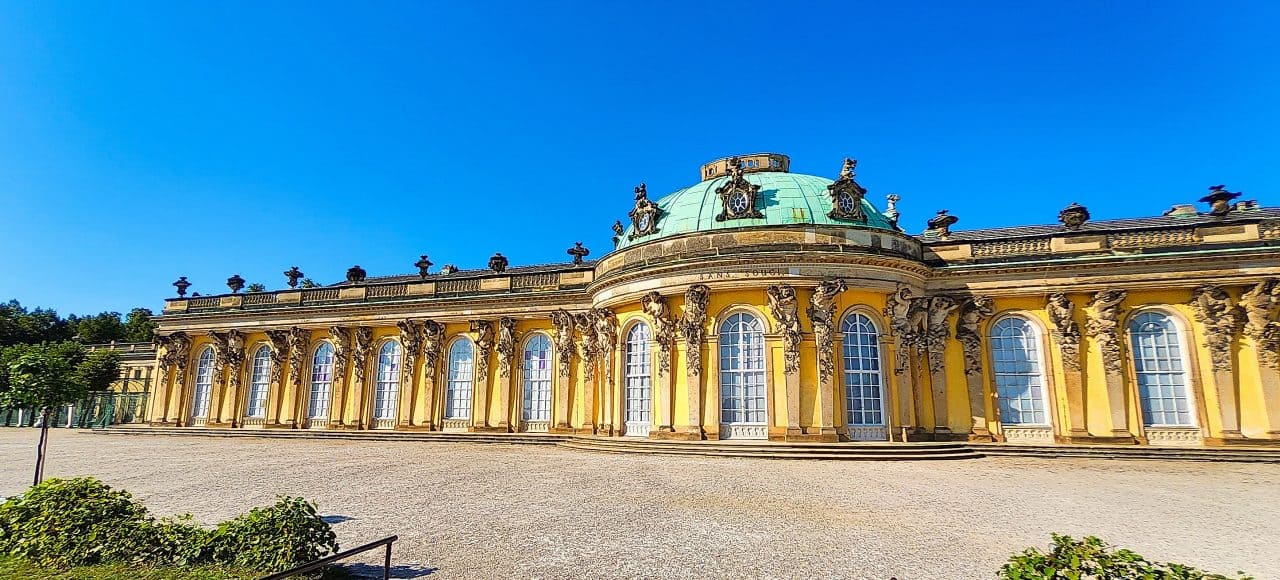

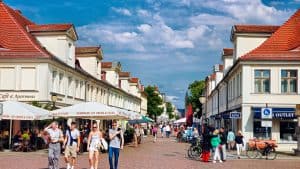
Leave a Reply